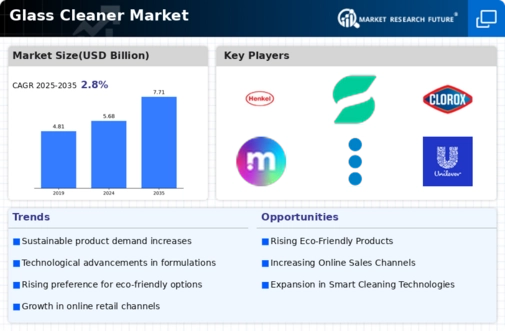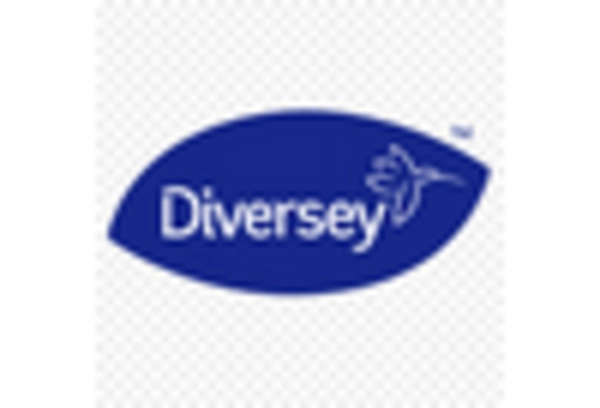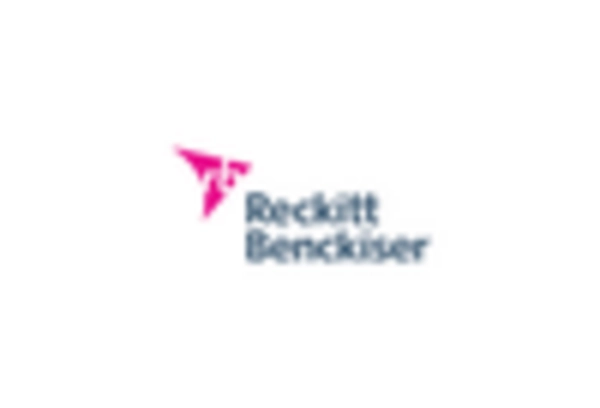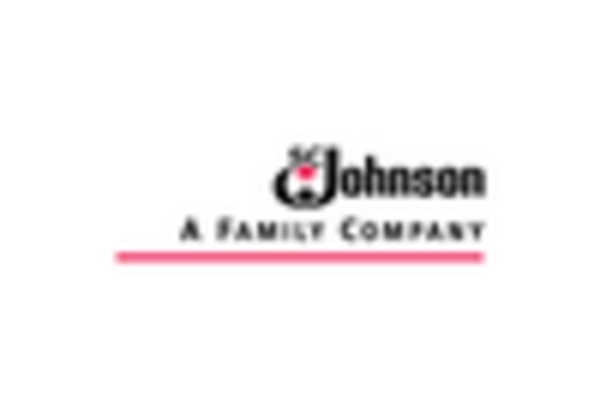Expansion of E-commerce Platforms
The expansion of e-commerce platforms is transforming the Glass Cleaner Market by providing consumers with greater access to a variety of cleaning products. Online shopping offers convenience and a wider selection, allowing consumers to compare products and prices easily. This shift towards online retail is expected to drive a 7% increase in glass cleaner sales over the next few years, as more consumers opt for the convenience of home delivery. Consequently, companies are investing in their online presence and marketing strategies to capture this growing segment of the market, thereby enhancing their reach within the Glass Cleaner Market.
Rising Demand for Eco-Friendly Products
The Glass Cleaner Market is experiencing a notable shift towards eco-friendly products, driven by increasing consumer awareness regarding environmental sustainability. As consumers become more conscious of the ecological impact of their purchases, the demand for glass cleaners formulated with biodegradable ingredients and recyclable packaging is on the rise. This trend is reflected in market data, indicating that eco-friendly glass cleaners are projected to capture a significant share of the market, potentially reaching 30% by 2026. Companies are responding by reformulating their products to meet these preferences, thereby enhancing their competitive edge in the Glass Cleaner Market.
Growing Awareness of Hygiene and Cleanliness
The heightened awareness of hygiene and cleanliness is a pivotal driver for the Glass Cleaner Market. Consumers are increasingly prioritizing cleanliness in their homes and workplaces, leading to a surge in demand for effective cleaning products. This trend is particularly evident in commercial spaces, where maintaining a clean environment is essential for customer satisfaction and employee well-being. Market data indicates that the demand for glass cleaners in commercial settings is expected to grow by 6% annually, reflecting the critical role of hygiene in influencing purchasing decisions within the Glass Cleaner Market.
Technological Advancements in Cleaning Solutions
Technological innovations are playing a crucial role in shaping the Glass Cleaner Market. The introduction of advanced cleaning formulations, such as streak-free and anti-fog solutions, is enhancing the effectiveness of glass cleaners. These innovations not only improve cleaning efficiency but also cater to specific consumer needs, such as those in automotive and commercial sectors. Market analysis suggests that the segment for technologically advanced glass cleaners is expected to grow at a compound annual growth rate of 5% over the next five years. This growth indicates a strong consumer preference for high-performance products within the Glass Cleaner Market.
Increase in Urbanization and Construction Activities
Urbanization and ongoing construction activities are significantly influencing the Glass Cleaner Market. As urban areas expand, the demand for residential and commercial buildings increases, leading to a higher need for effective cleaning solutions. The construction sector's growth is projected to contribute to a 4% increase in glass cleaner sales annually, as new buildings require regular maintenance and cleaning. This trend highlights the importance of glass cleaners in maintaining aesthetic appeal and hygiene in urban environments, thereby driving the overall growth of the Glass Cleaner Market.


















Leave a Comment